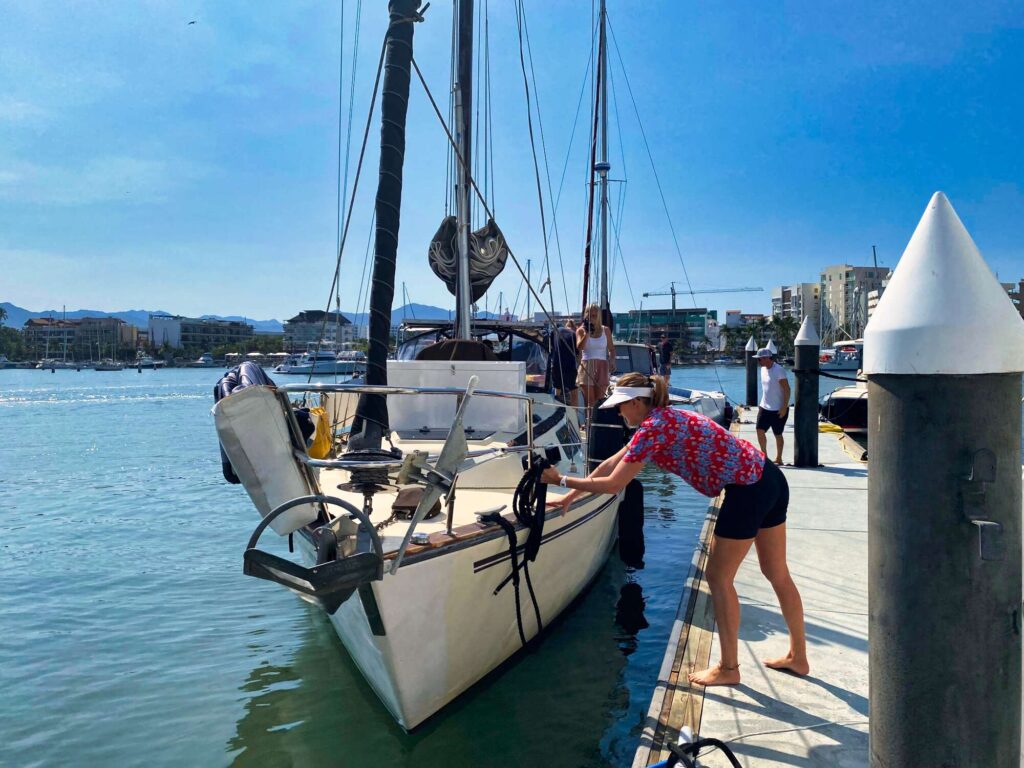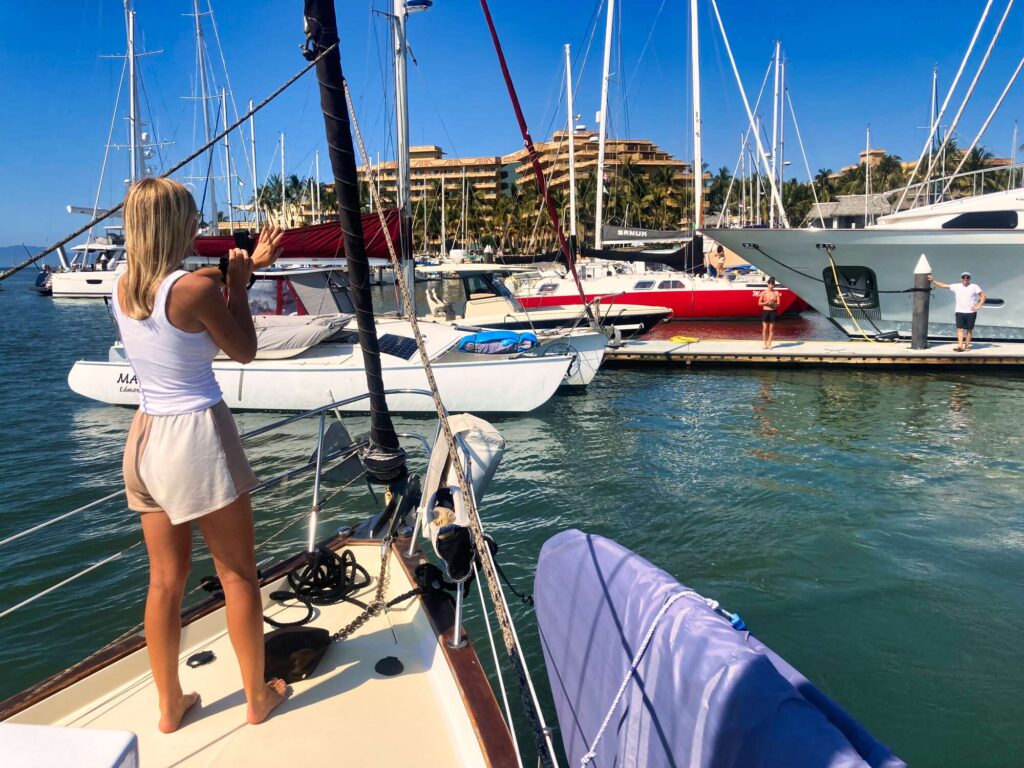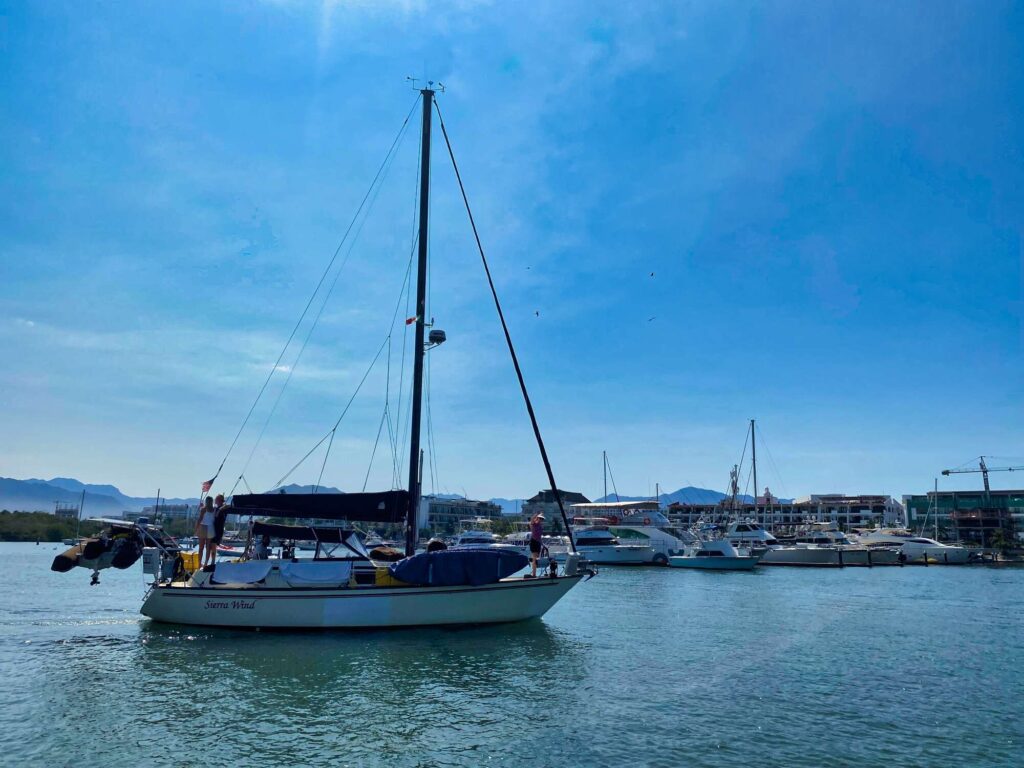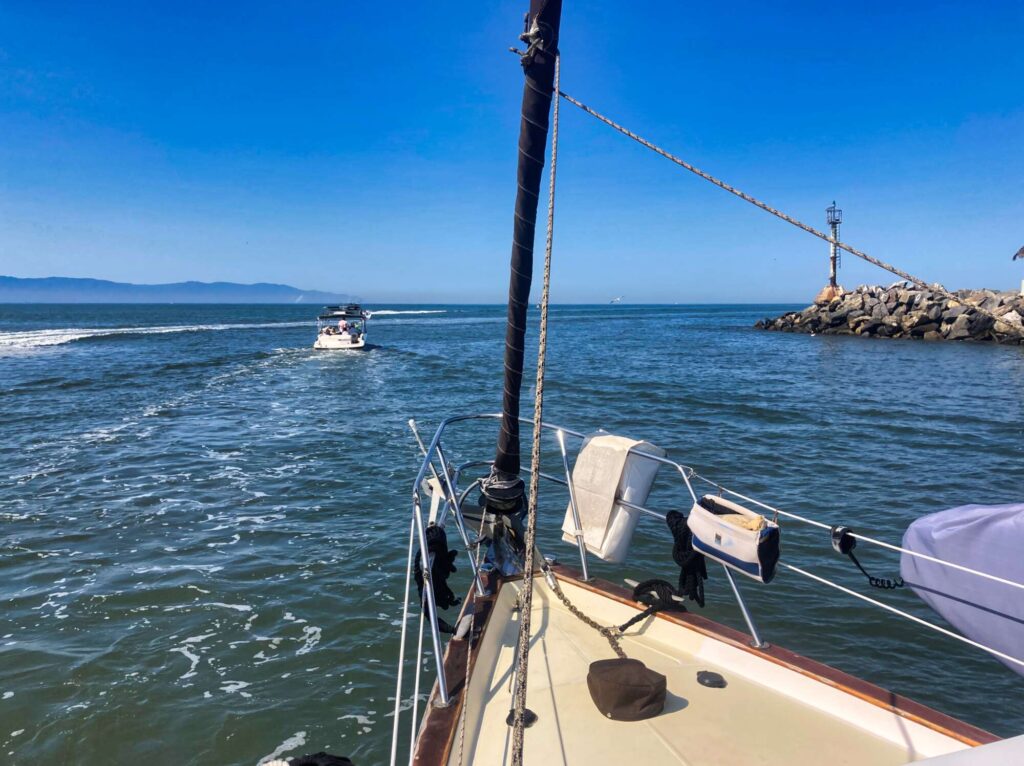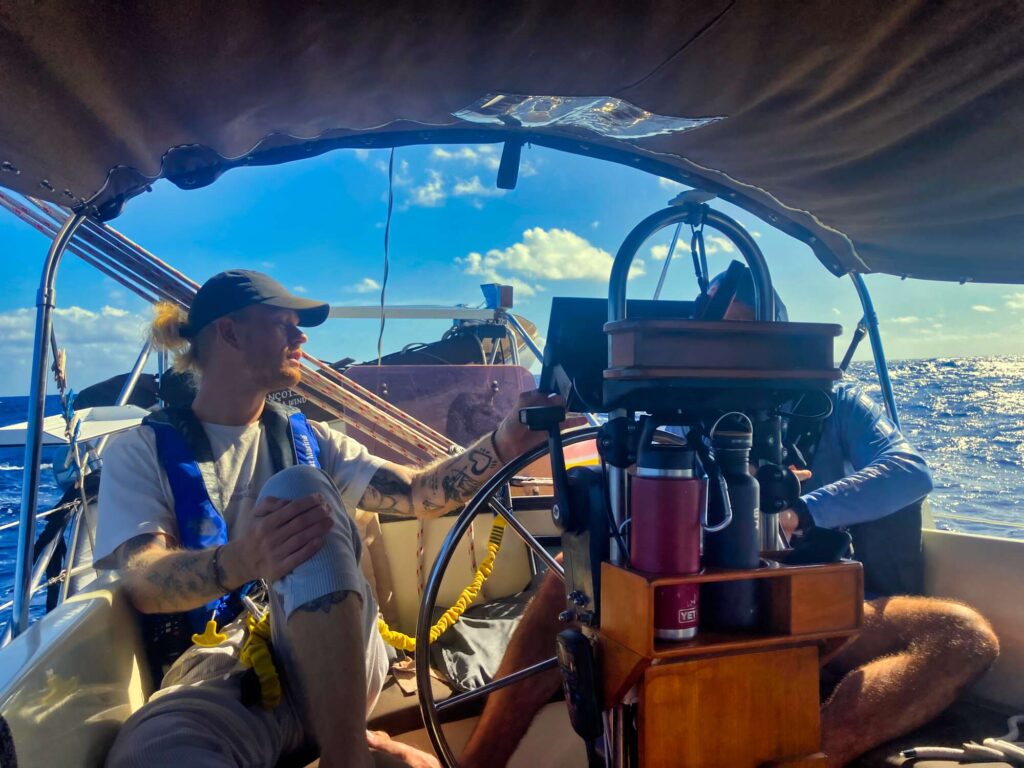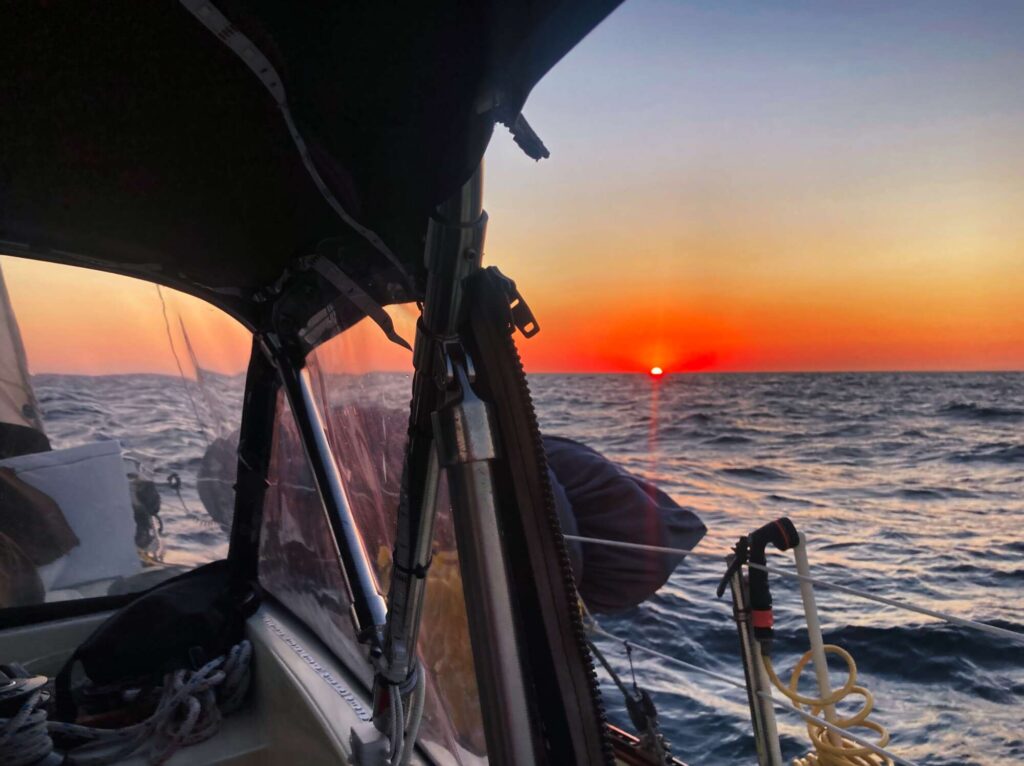After a nearly sleepless, anxiety filled night, I awoke on the morning of our planned departure for the Pacific Ocean crossing to the Marquesas Islands of French Polynesia. Of any circumnavigation, this is the longest passage between land at approximately 3,000 miles. We stayed up until 1 AM the night before, organizing and storing all of our provisions. The morning was eerily calm, without much left to do other than fill up the water tank. Eitan and I decided to have one last meal on land and got breakfast with our friends Wes and Susan on S/V Sauce-Sea. They were planning on making the same crossing but would be about a month behind us.
By 11am we were ready to disconnect the shore power and pull the dock lines. Wes and Susan helped us off the dock and took some pictures of our final departure from Mexico. Some of our other dock neighbors also stuck their heads up to wave us off. There was no turning back now and the energy onboard was filled mostly with excitement for the trip ahead. Based on the forecast and Eitan’s experience of sailing in the Pacific, the first few days were projected to be the most uncomfortable, still experiencing the northerly winds as they funnel down Baja. Once we got far enough from land, the trade winds should kick in and give us a nice, consistent 15 knots of wind with some long-period gentle, rolling swell. Spoiler alert: this did not happen.
As we were leaving Banderas Bay, Eitan gave us the safety briefing and instructed our new crew, Martin and Simone, on how to set up their PFDs with lights and whistles. Eitan installed the jack lines on either side of the boat and secured a third line that ran in the cockpit for us to stay clipped in with our harnesses whenever we weren’t inside. We also set up the initial watch schedule: Eitan and Simone would be on watch for the first four hours and Martin and I would take the next four shift, then alternate back and forth for the first day or two until the new crew felt comfortable standing watch together, and then alone.
After an hour of motoring out of the bay, the wind picked up to 10 knots which was enough to get us sailing on our way. For the rest of the day the conditions were as expected and I tried to rest as much as I could when I wasn’t on watch but found I was too anxious to get much sleep. At midnight, I got a message from our friends on SV Kismet that they were leaving Punta de Mita with a couple other boats, including SV Sky Pond and SV Hold Fast. They had superstitiously anchored there for a few hours to avoid starting the passage on a Friday, so started their crossings just after midnight Saturday morning.
By Martin’s and my first night shift, the conditions were still relatively calm and I continued to brief him on using the chart plotter, how to make an emergency call, what to do if you see a boat, and other boat protocols. As we were talking, I felt an impact to my right shoulder, followed by the sound of something flapping about onboard. I had been hit by a flying fish and did my best to rescue him without harm.
By the morning of Day-2, we were all quite tired from the 4-hours on, 4-hours off schedule. As I rested in the cabin, I kept smelling diesel and figured it was from the full tank. Eitan investigated and it seemed the access hatch for the tank was leaking because some of the screws that hold the hatch on had loosened and were no longer effectively sealing the tank. So, I held up the mattress while Eitan worked to clean up the spilled fuel and resecure the hatch. Then, he used degreaser spray to clean out the bilge as best he could to eliminate the smell.
As Martin and Simone became comfortable standing watch alone, we switched to our schedule to that we would use for the remainder of the trip: 3-hours on, 9-hours off. This allowed us to only have one day shift and one night shift with plenty of down time in between. My watch was from 3 to 6 PM in the afternoon and 3 to 6 AM in the early morning. This was my favorite time because my watch ended with the sunset and sunrise each day.
The first few days continued to be quite rollie and uncomfortable as Eitan had predicted. There was enough wind to keep us powered by the sails but if it dropped below 14 knots, the swell would bob us from side to side, causing the sails to backfill and flog back and forth, straining the sails and rig. Simone was the only one of us to become seasick but none of us were feeling great due to the constant motion and rolling. Sleeping became more and more difficult and at times, Eitan resorted to sleeping in the cockpit, strapped in with his harness and tether because both he and the mattress had been thrown from bed.
With the growing fatigue, eating became less of a priority and I tried to coax everyone into eating as much fresh food as possible before it spoiled. We resorted to snacking and picking away at some leftover soup I had prepared before the trip. Cooking food on the stove seemed almost impossible since you needed to constantly brace yourself when in the galley. Luckily, we were on a starboard tack and the food was braced by the backsplash in the galley but Eitan had to install a latch on the pantry to prevent our stacks of eggs and pasta sauce from flying out.
The conditions continued and remained consistent. The wind would pick up throughout the day and hold at 15 to 20 knots and then drop off in the evening to 10 to 15 knots. It was constantly amazing to me to look at the chart plotter and see the distance we covered each day without the use of a motor. We only used the motor in idle about an hour per day to top off the batteries. After the first day we could no longer see land and as we progress farther and farther into the Pacific, I did my best to not think about how isolated we were becoming.

